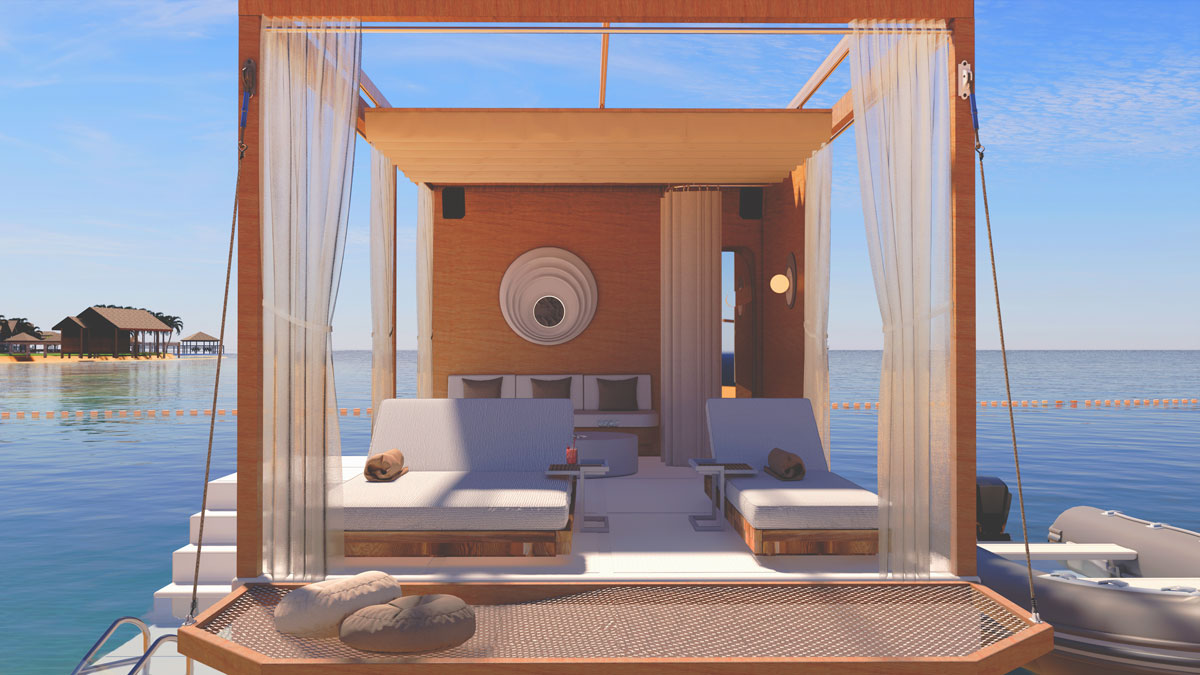
Beach holidays are no longer limited to the traditional trio of sea, sand, and sun. Today’s travelers crave unique experiences that blend relaxation with innovation. Enter the Floating Lounge, an innovative addition to waterfront properties [...]
World population growth and increasing global energy demand are driving the search for clean, carbon-neutral, and renewable energy sources. Marine renewables could support sustainable blue economy growth by providing a sizeable portion of the world's energy needs in the years to come.
A global energy transition to renewable energy sources plays an essential role in mitigating climate change and creating a more sustainable and low-carbon energy future. This energy transition is enabled by technological innovations, notably in the field of marine renewables.
The marine renewable energy sector has grown remarkably over the past two decades, according to the European Commission. Due to the vast renewable energy resources available offshore, marine renewables are becoming a key contributor to global energy needs. They provide large-scale, reliable, and low-carbon energy, especially in countries with high population density and competing uses for available land.
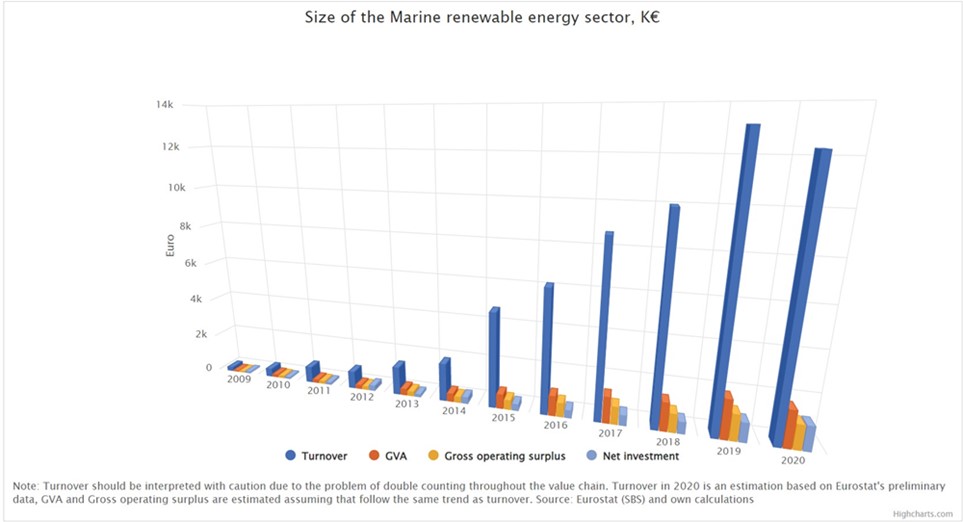
Source: European Commission EU Blue Economy Observatory
Marine Renewables, also known as offshore renewables, are technologies that enable the generation of energy from renewable sources located in marine environments. Producing offshore renewable energy involves several steps, including site selection, project planning, permitting, installation, and operation. The specific process may vary depending on the type of technology being used, the regulatory requirements of the jurisdiction, and the unique characteristics of the project site.
Working with experienced professionals, including engineers, environmental specialists, and project managers, is essential for ensuring a successful marine renewable energy project. HSB Marine offers a variety of solutions that enable efficient and sustainable generation of energy from the marine environment.
Marine renewables offer remarkable advantages over land-based energy production, such as: the potential to produce large-scale projects, reduce visual and noise impacts or to utilize the resources that are not available on land.
Marine environment abounds with many sources of renewable energy, such as sun, wind, and the ocean. Marine renewable energy technologies include:
• Ocean Energy
• Offshore Wind Energy
• Floating Solar PV
• Hybrid Power Plants
Ocean energy technologies are technologies that harness the power of the ocean's natural resources, such as waves, tides, currents, temperature gradients, and salinity gradients, to generate electricity or perform other useful tasks. The examples of ocean energy technologies are:
Wave Energy Converters (WECs) are devices that capture kinetic energy from ocean waves and convert it into electricity. Wave energy devices can be floating - installed on the surface of the ocean or submerged below the water. These devices are typically installed offshore to generate electricity from the up-and-down motion of waves. They use use various mechanisms, such as oscillating water columns, point absorbers, or overtopping devices.

The Mocean Energy Blue X wave energy converter (Credit: Colin Keldie, Emec)
Tidal Energy Converters (TECs) are devices that capture the kinetic energy of tidal currents and convert it into electricity. These devices can be either submerged or floating.
Tidal energy can be captured using underwater turbines or barrage systems. They allow water to flow through turbines during tidal changes. This technology is highly predictable and reliable due to consistency of tides.
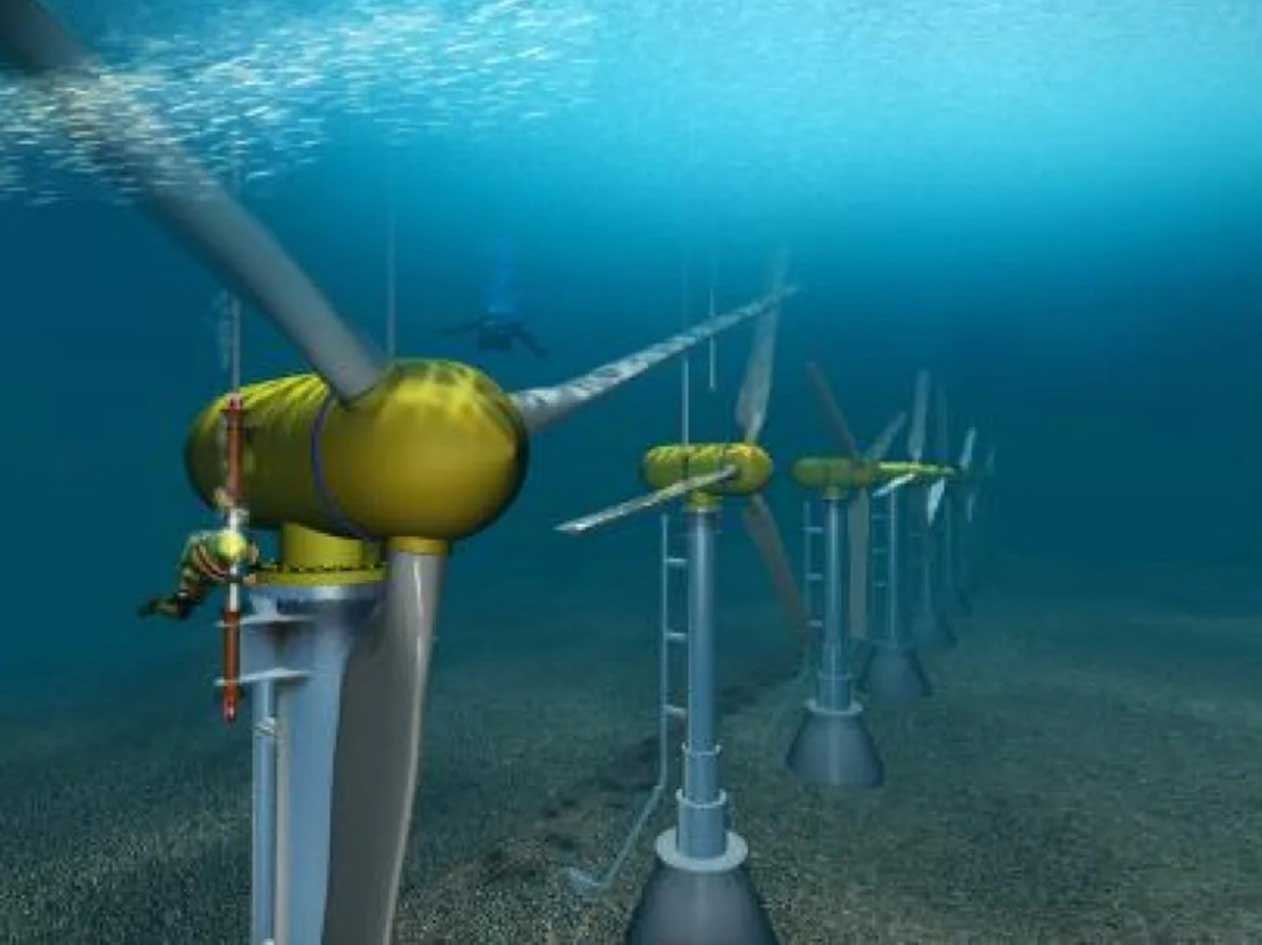
Ocean Current Energy Converters (OCECs) are devices that utilize the temperature difference between warm surface waters and cold deep waters in the ocean. Warm surface waters are used to vaporize a working fluid, which then drives a turbine to produce electricity.
Cold deep waters are used to condense the vapor back into a liquid. OTEC can be moored to the ocean floor or suspended in the water column. They can operate in both shallow and deep waters.
Salinity Gradient Energy Systems are technologies that capture the energy from the difference in salinity between saltwater and freshwater in the ocean. These systems typically use semipermeable membranes, pressure-retarded osmosis (PRO) or reverse electrodialysis (RED) systems.
In a PRO system, the pressure created by the osmotic flow of water is used to generate electricity by driving a turbine. In a RED system, the salinity gradient is used to generate electricity through an electrochemical process. This process involves passing salt ions through ion exchange membranes, creating a voltage difference that can be used to generate electricity.
Biomass or biomethane gas are produced from organic matter such algae, sewage, or agricultural waste. These are found in bodies of water can also be used as a renewable energy source for heating, transportation, and electricity generation.
Baseload electricity can be efficiently produced from ocean energy since it is highly predictable. Marine and hydrokinetic energy may supply more than twice the world's current electricity needs. According to International Renewable Energy Agency (IRENA), the theoretical potential for all ocean energy technologies ranges from 45 000 terawatt-hours (TWh) to above 130 000 TWh per year.
Marine wind energy is captured by large wind turbines in the open sea, where winds are typically stronger and more consistent than onshore. Wind turbines can be mounted on fixed foundations or floating platforms.
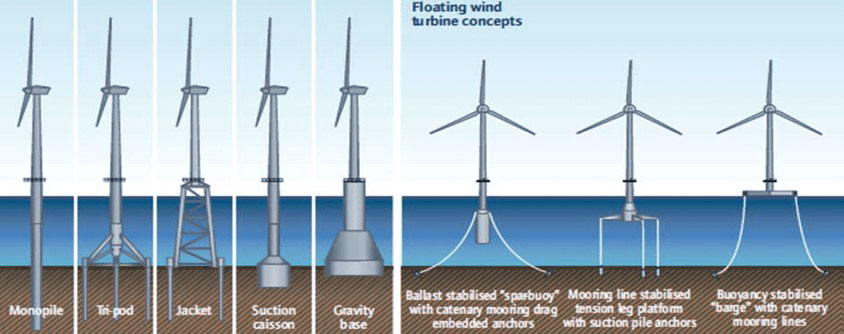
(Wiser, R. et al., 2011)
The main difference between the two is in the way the wind turbine is attached to the sea floor. Unlike fixed-bottom ones, floating wind turbines don’t need to be grounded in the seabed. This allows them to be positioned further out to sea where winds are stronger.
Existing wind resources at sea are higher and more regular than on land, thus increasing the electrical generation of wind turbines with the same dimensions. Furthermore, the lower surface roughness in the sea requires a lower tower height compared to a terrestrial wind turbine.
Marine wind turbines with fixed foundations are structures mounted on the ocean floor. According to the foundations used in their construction, they are classified as: ‘monopile’ (steel cylinder that supports the tower buried in the seabed); ‘support by gravity’ (concrete or steel platform that requires prior preparation of the seabed); ‘jackets’ or ‘tripod’ (structures with 3 or 4 anchor points).
The major limitation of this type is that they are still restricted to waters less than 50-60 meters deep. The largest potential markets for offshore such as Japan, France and the US West coast, have few shallow-water sites, which makes this type not applicable.
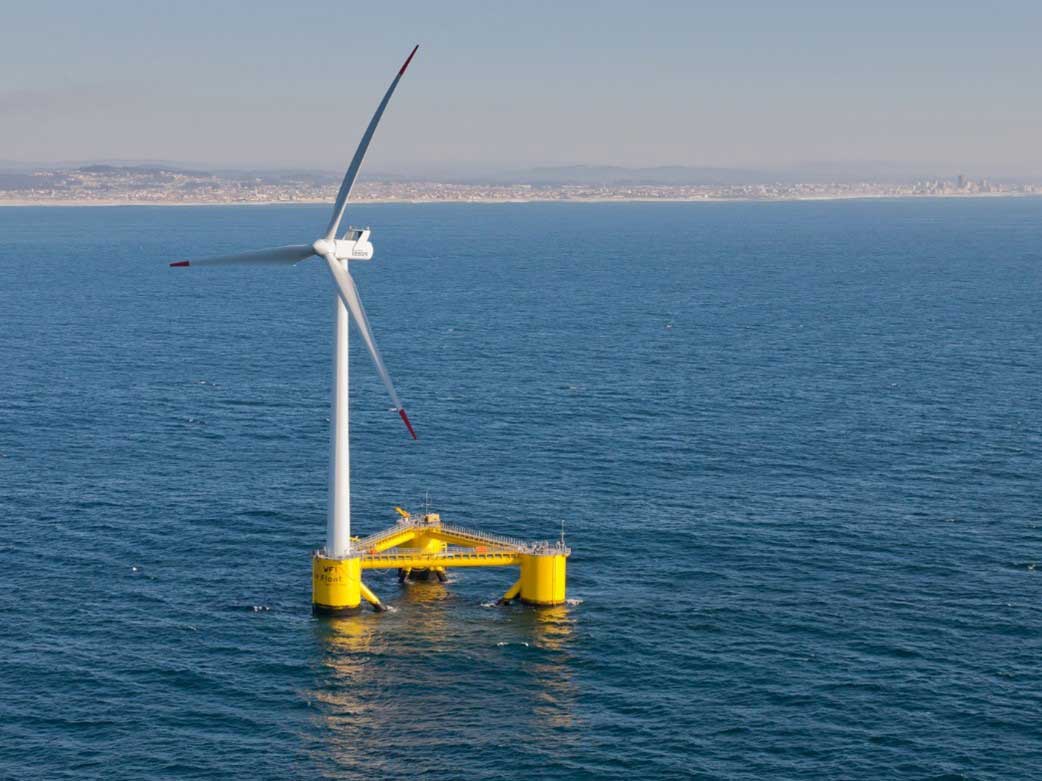
A floating wind turbine is an offshore wind turbine mounted on a floating foundation. The offshore wind sector benefits from two significant advantages provided by floating foundations: they enable access to locations with deeper water (below 50 meters) and locations up to 80 kilometers from the coast.
Floating wind turbines typically consist of a floating platform, which provides stability and buoyancy; and a wind turbine mounted on top of the platform. The platform can be constructed using various designs, such as tension leg platforms (TLPs), semi-submersible platforms, or spar buoys, depending on the location and environmental conditions.
The wind turbine on top of the platform captures the kinetic energy from the wind and converts it into electricity using a generator. The energy is then transmitted to shore through underwater cables for distribution to the electrical grid.
According to IRENA, the offshore wind capacity could reach 228 GW, by 2030 and 1 000 GW by 2050. This growth will be driven by the decrease in technology costs. For comparison, only 160 MW could be generated by Denmark's first offshore wind farm on a commercial basis when it was put into operation in 2002.
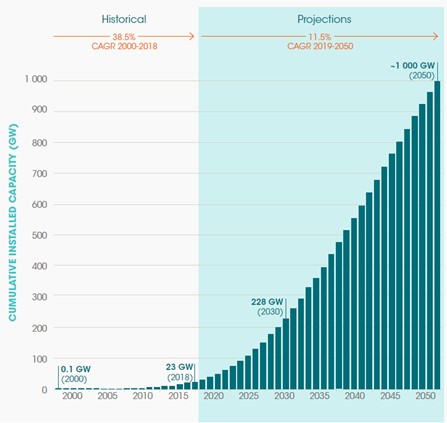
Annual offshore wind capacity additions (2000-2050). Source: IRENA
Floating solar, also known as floating photovoltaic (FPV) or floating solar farms, are arrays of solar panels that are installed on bodies of water to generate electricity from the sun's energy. Floating solar is a promising and innovative approach to harnessing solar energy taking advantage of large water surface to maximize solar energy generation with reduced environmental impacts.
The general layout of a floating solar consists of solar panels mounted directly onto floating structures with maintenance walkways. Typically, the floating structure can be made of so-called pure floats or floats that are combined with metal trusses. A pure float configuration uses specially designed self-buoyant bodies to which PV panels can be directly affixed. Depending on the site location, wind load, water depth, and variability in the water level, the floating platform is held in place by different anchoring and mooring system.
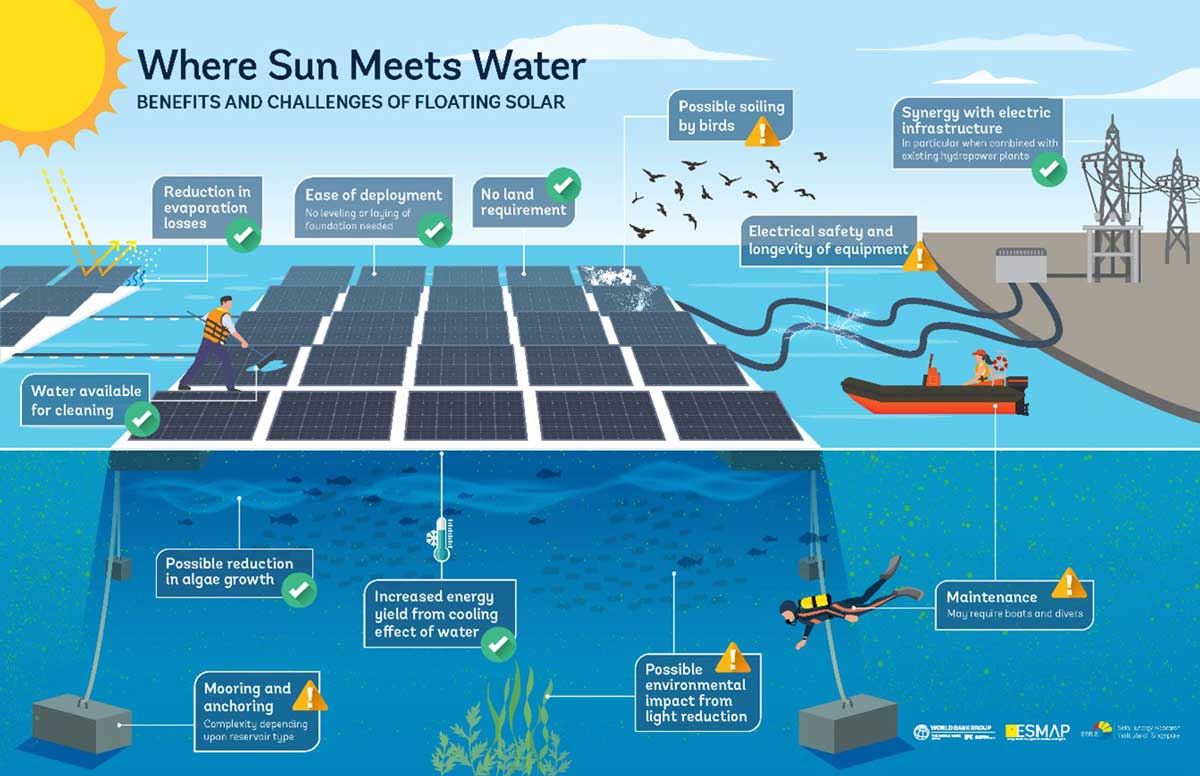
Floating solar PV is new technology with the potential for significant growth. The first FPV system was built in 2007 in Aichi, Japan, followed by several other countries, including France, Italy, the Republic of Korea, Spain, and the United States.
According to World Bank, the global cumulative installed capacity of FPV plants was 1.1 GW at the end of September 2018. A study in the journal Nature estimated that covering 10 percent of the world’s water surfaces with floating solar panels could produce 4,000 GW, which is equal to the electricity produced by all the world’s fossil fuel power plants.
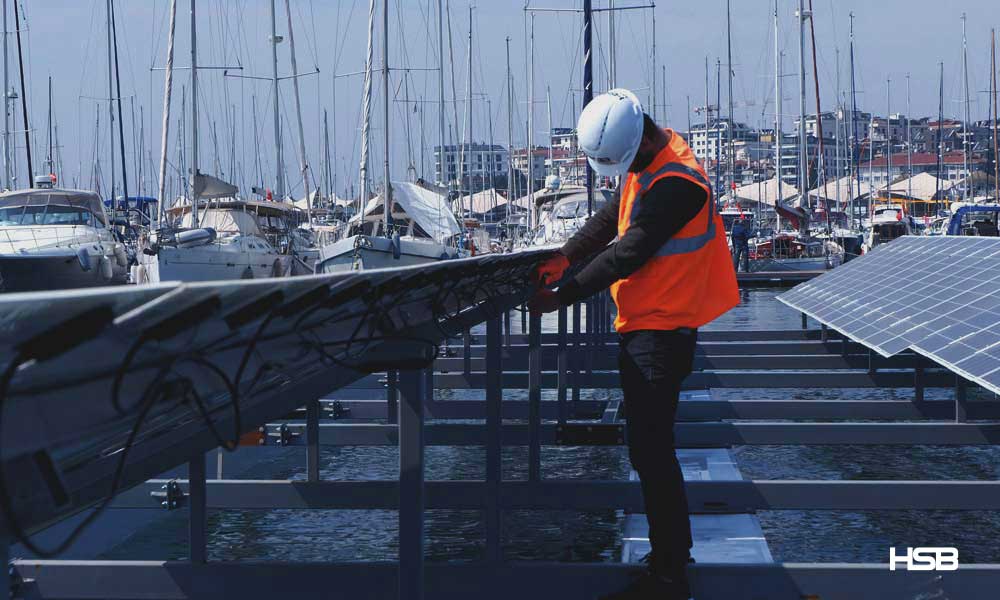
HSB Marine - Floating Solar PV Platform (Solar-Dock)
Hybrid systems combine two or more marine renewable energy production technologies to optimize energy generation. For example, Poshydon Project in Netherlands is being developed to integrate three energy systems: offshore wind, gas and hydrogen. A floating wind farm can be combined with wave energy converters or tidal energy devices to take advantage of multiple renewable energy sources and increase overall energy production. Since solar panels can float in the water between offshore wind turbines, it is possible to combine both energy generation methods for more effective use of marine space.
Overall, offshore renewable energy production offers numerous benefits, including a reliable and abundant energy source, reduced greenhouse gas emissions, job creation and economic benefits, improved energy security, potential for innovation, and environmental advantages. However, it's important to note that the development and deployment of marine renewables should be done in in a manner that aligns with the principles of the blue economy, which emphasizes sustainable and responsible use of marine resources for the benefit of present and future generations.
Industry experts estimate that by 2050 around 5 GW to 30 GW of floating offshore capacity could account for up to 15% of global offshore wind installed capacity, around 150 GW. 13 floating offshore wind projects have been launched globally, including 9 in Europe (France, Portugal, and the UK), 3 in Asia (Japan and the Republic of Korea), and 1 in the US (Power Technology, 2019). The Haliade-X 13 MW is a cutting-edge offshore wind turbine developed by General Electric (GE),
It is currently the largest and most powerful offshore wind turbine in operation. World largest offshore wind farm called Hywind Tampen, installed in waters between 260 and 300 meters deep, is being planned by the Norwegian energy company Equinor. Tampen will include 11 large wind turbines with floating foundations, each with a rotor diameter of 167 meters and 81.5-meter-long turbine blades.
Many countries including China, India, Taiwan, South Korea, Germany, the Netherlands, and the United States are constructing floating solar farms. The largest operational floating project is Dingzhuang solar farm in eastern China while the largest planned FPV project is the Saemangeum floating solar farm in South Korea. This 2.1-gigawatt project aims to be operational in 2030.
The largest floating solar park in Europe under construction is in Portugal at the Alqueva Reservoir. SolarDuck, a Dutch-Norwegian floating solar developer, will develop a 500-kilowatt offshore pilot project in the North Sea consisting of six interconnected platforms on synthetic anchors at an offshore wind farm.
Marine renewables continue to diversify and develop. The world's oceans offer an essential location for the development of renewable energy sources. Advancements in technology and research continue to expand the potential of utilizing water bodies as a sustainable source of clean energy. As a key contributor to global energy needs, marine energy industry will become the key industry for global renewable energy production.
Each technology has its advantages, limitations, and considerations, and the feasibility of implementing them depends on factors such as location, resource availability, environmental impacts, and economic considerations. Proper planning, research, and consultation with experts are essential when considering the production of renewable energy on water.